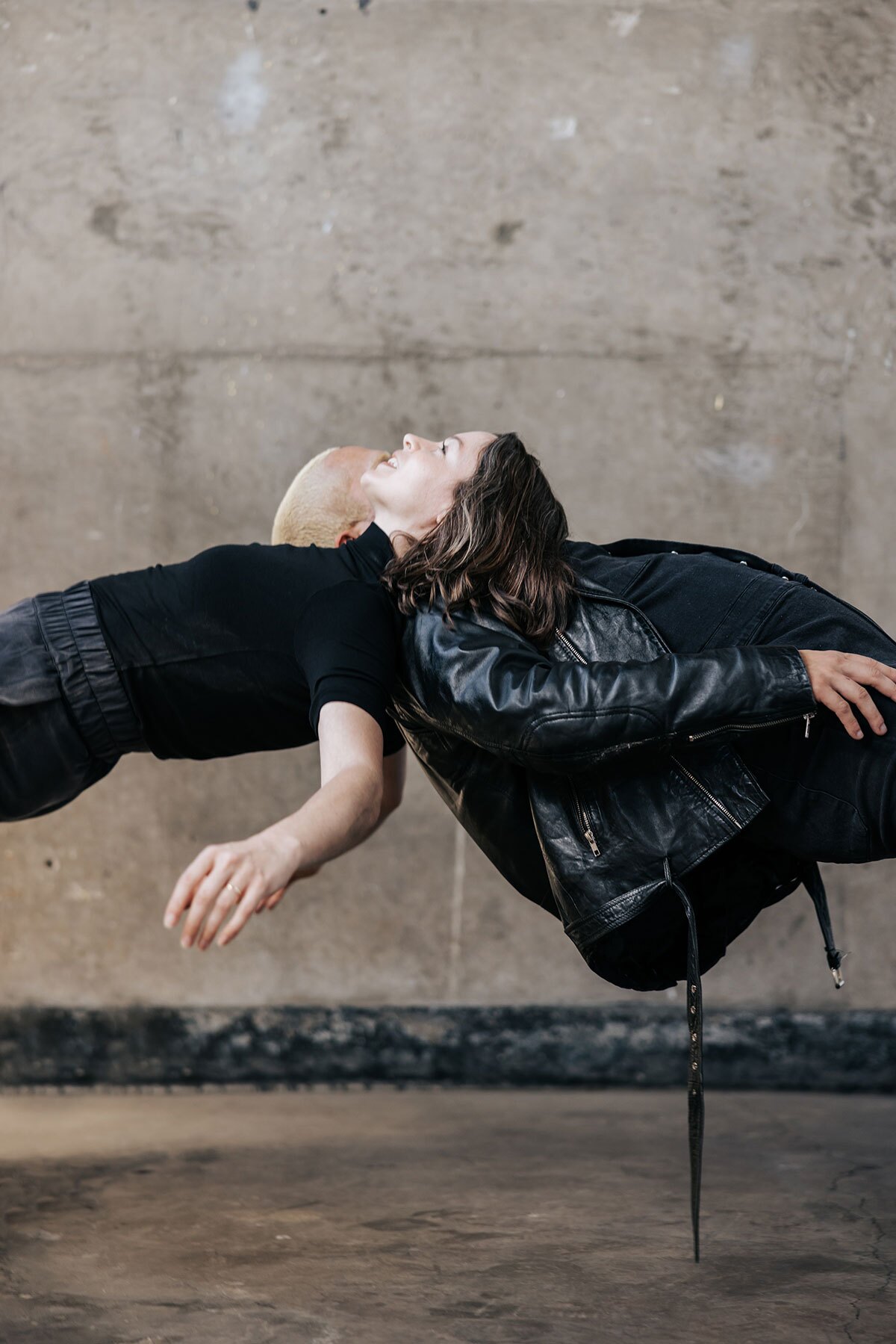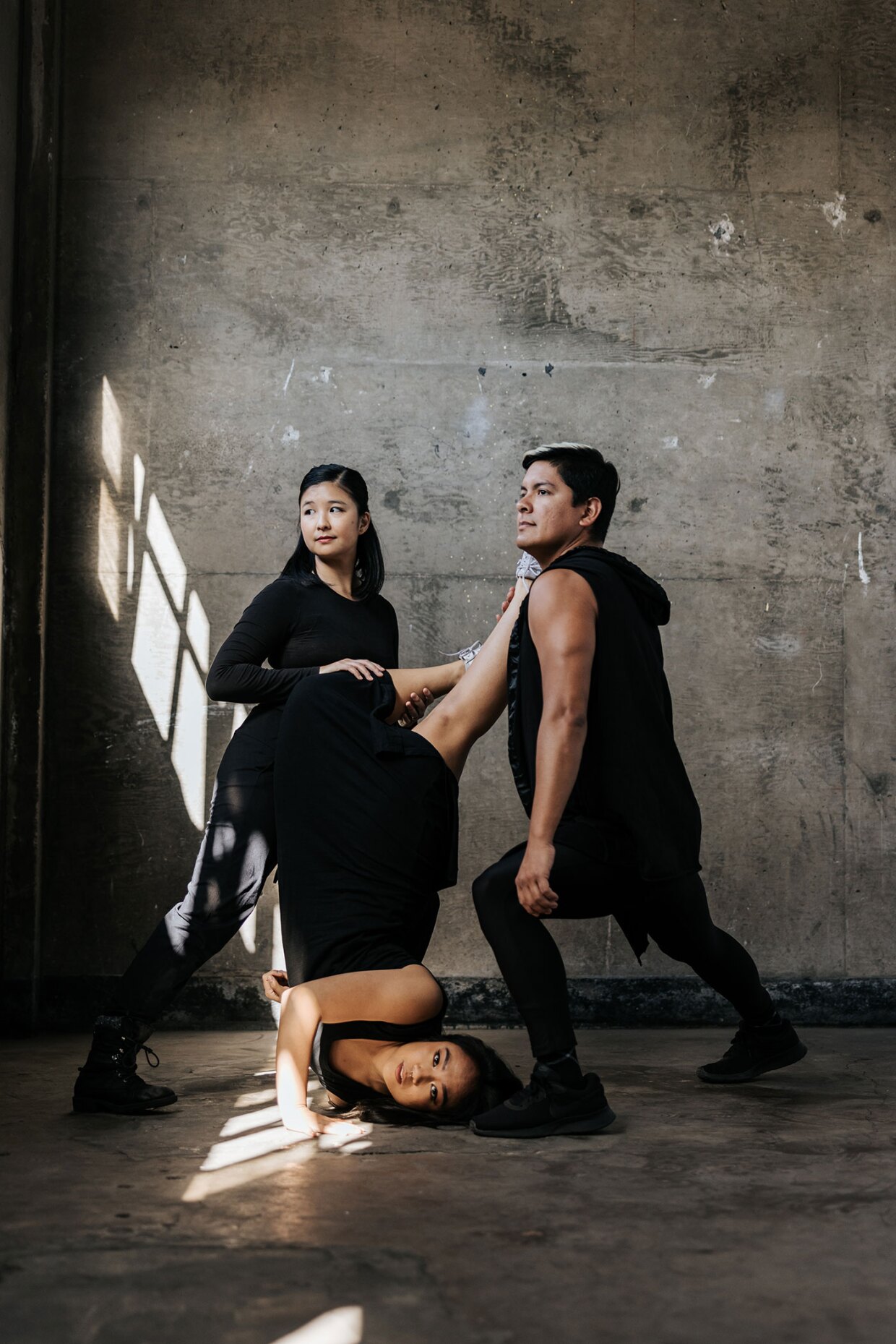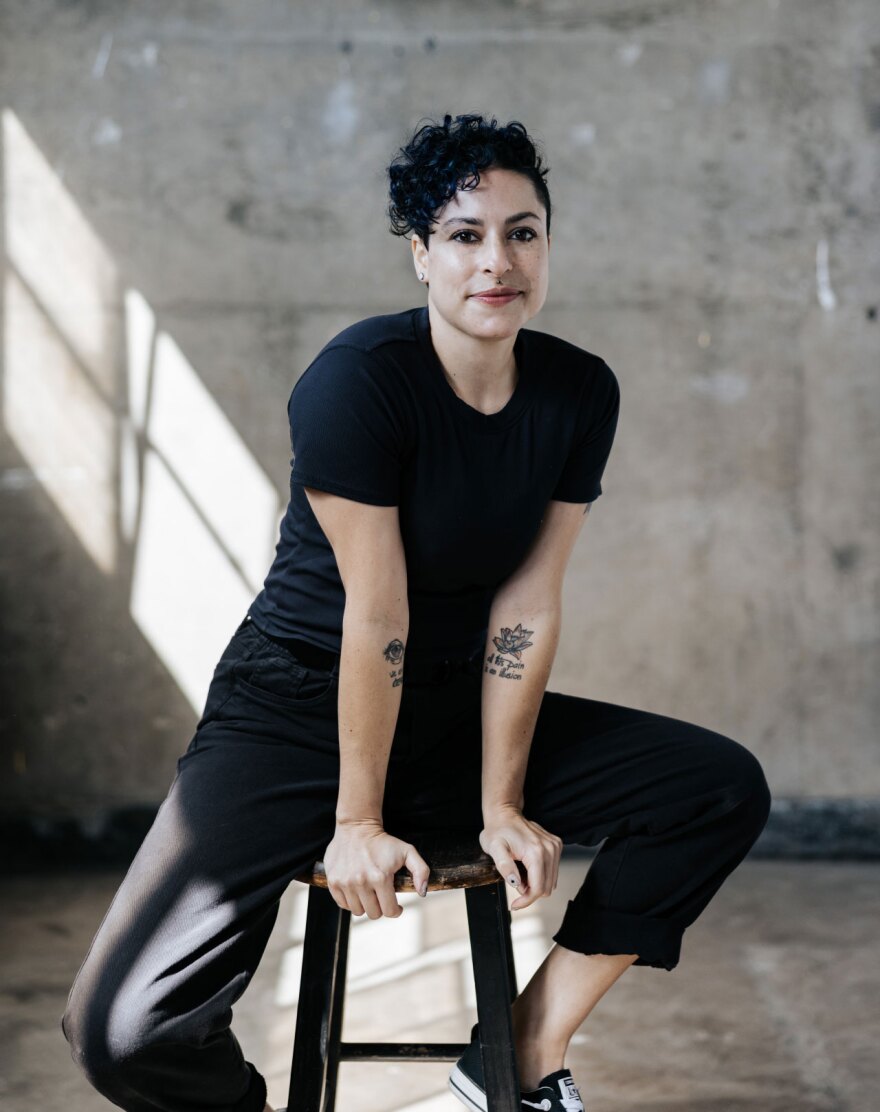In this week's spring showcase performances, "Spectra," San Diego-based contemporary dance company Disco Riot will perform four new works at the City Heights Performance Annex: Anna Brown Massey's "Margaret Carmichael," Martin (Marty) Anthony Dorado's "I Depart. We Arrive. We Depart. I Arrive," Salinas' "Hourglass Alchemy," and Chelsea Zeffiro's "Girldream (1996)."
With the exception of Massey as a guest choreographer, the other works are choreographed by company artists — and each piece is considered a collaboration, said cofounder and artistic director Zaquia Mahler Salinas.
"The group of people that we have [who] are sort of the core of Disco Riot are really amazing artists and collaborators. Very often dancers are asked to perform work that they don't have a lot of voice in, or are — on the other end of the spectrum — asked to contribute quite a lot to making the dance, but not given credit for doing so," she said.

For Disco Riot, everyone participating in the work is part of the creative process. "There's no making dance without the dancers in the room, and the choreographer can't just pull a dance out of nowhere if there's nobody to work with," Salinas said.
While the choreographers were given no specific directive, Salinas said that each piece seems inherently linked.
"What emerged as the through line across all of the pieces over time was this interest or curiosity or attention to reflecting on personal histories and personal past," she said.
Salinas' work, "Hourglass Alchemy," is a multimedia collaboration with Chelsea Zeffiro, and the two perform the piece as a duet, using music selections from teen punk sensation The Linda Lindas, Tunisian performer Ghalia Benali and instrumentalist Charles Spearin.
"The initial questions for the piece or the things that we started with were: what is your inherited trauma? What is your inherited triumph and what is your inherited magic?" Salinas said. "I'm sort of always obsessed with this — the way in which our inheritance from our parents, or from society, or from the culture that we grow up in, or from our genetic lineage or whatever that is, like, how that sort of is in the body and how that informs who we become."
Zeffiro's piece, "Girldream (1996)," features a bigger cast of dancers, fantastical, sequined costumes and a "mixtape" style soundtrack edited by Zeffiro.
"Chelsea works with images quite a lot. She's interested in making images in the space with the dancers and is very referential in that way. But there's a lot of childhood play and there's some images of family in there and wish and playfulness and memory," Salinas said.

Dorado's piece is a reflection of the last decade since he moved to San Diego, and a love letter to his past self. Salinas said that Dorado worked with the participating quartet of dancers to also stitch together imagery and themes from their experience in the last ten years, as both collective and individual narratives.
"Where were they 10 years ago? Where did they think they would be now? And also sort of imagining futures," Salinas said of the work. It's a heady, welcome question in the pandemic-era time warp.
Finally, guest choreographer Anna Brown Massey will present her new work, "Margaret Carmichael," based on the Cape Breton, Nova Scotia style of stepdance and Scottish Highland dance styles.
Salinas said that Massey has ancestral roots in Cape Breton, Nova Scotia, and this piece melds her Scottish Highland dancing background with contemporary dance. The first section features elements of Scottish Highland dance ("It's a lot of jumping," Salinas said), then the second section is an homage to the social tradition of a "ceilidh," when communities gather to dance, joyfully, regardless of whether the occasion is celebratory, mournful, or no occasion at all.
"It's just like with any other dance form that is a cultural dance form and a folkloric dance form versus like a concert dance form. Like people in the community, if you are from that community, if you are from Cape Breton or from Nova Scotia, if you're Scottish, these are your cultural traditions. These are the steps that people kind of know," Salinas said. "It's in the cultural aspect of how dance exists outside of a stage space."

Most Disco Riot shows aim to push the boundaries of what an audience member may think of as dance or movement art, especially with their "Choreo & ____" audience participation series. It began in early 2020, pre-pandemic, with a "Choreo & Skate" event at a roller rink.
On May 28, they'll hold "Choreo & Climb" at the Grotto rock climbing gym (all ages; $20-$35). Audience members can take a quick lesson and gear up to boulder before and between the short dance performances.
"I have a curiosity about how we can sort of rethink the context of where dance happens, how it happens, and who is dancing a little bit, so that we can include a little more range of what movement and dance is about," Salinas said.
Disco Riot's spring showcase, "Spectra" takes place Thursday, Friday and Saturday, Apr. 21-23, 2022, with shows each night at 7 p.m. Tickets are donation-based, but advance reservations are required; no tickets will be sold at the door.









